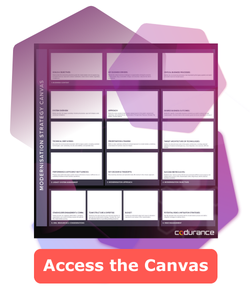
- By Codurance Insights
- ·
- Posted 07 Apr 2025
The CTO Playbook for Retail Transformation: Building for Agility, Data, and Customer Experience
In today’s retail environment, customer experience is the battleground—and technology is at the heart of it.

Prefer listening over reading? Press play and enjoy
When faced with the challenge of modernising legacy systems in businesses, we know the potential benefits are immense, but so are the challenges. Legacy systems are often outdated, costly to maintain, and burdened with significant technical debt. Why modernise legacy software? The answer lies in efficiency, scalability, and the ability to adapt to evolving market demands.
However, modernisation is far from straightforward. Without a clear strategy, there is a risk of making impulsive or misaligned decisions, leading to wasted investment and increased complexity. The Modernisation Strategy Canvas is the tool that will help you structure this process effectively, aligning technology with business objectives.
Legacy systems present multiple barriers that make their maintenance and upgrades difficult. While they may have once been fit for purpose, they can now become a roadblock to growth. How can enterprises modernise legacy systems? The task may seem daunting, but with the right guidance, such as the approach offered by the Modernisation Strategy Canvas, the process becomes far more manageable.
Some of the key challenges faced when modernising legacy systems include:
Misalignment between technology and business needs: Older systems often fail to meet modern business requirements. This can create bottlenecks, slowing growth and increasing operational costs, making change essential.
Impulsive or poorly informed decisions: Without a clear strategy, it is easy to fall into the trap of applying short-term fixes that fail to address the root problems. This can lead to patchwork solutions that exacerbate issues rather than resolving them effectively.
The Modernisation Strategy Canvas is a framework that not only helps identify these challenges but also addresses them in a structured manner. It breaks down the modernisation process into well-defined phases aligned with business objectives, ensuring that every decision adds long-term value.
The Modernisation Strategy Canvas is a practical tool that organises the modernisation strategy into key sections. Each part is designed to provide a comprehensive perspective, from assessing the legacy system to executing the new architecture. With this framework, you can effectively plan and manage the modernisation of legacy systems, ensuring that technological goals align with business priorities.
The first step is understanding why modernising legacy software is necessary. What are the goals? Are you looking for greater operational efficiency, cost reduction, or improved scalability? This step lays the foundation for the entire project, ensuring every decision aligns with the organisation’s strategic needs.
Goals and Objectives: Clearly defining the expected outcomes of modernisation is crucial. These must align with long-term business and technology goals.
Key Drivers: Identify the primary factors necessitating modernisation, whether it be improving efficiency, reducing costs, or enhancing competitiveness.
Critical Business Processes: Identify the business processes most affected by legacy systems. These will benefit the most from modernisation, creating a direct and significant impact on business efficiency and competitiveness.
A deep understanding of the legacy system is fundamental to making informed decisions about what changes to implement. This step helps identify critical areas that need addressing before any changes can take place.
System Overview: How is the system built? What technologies does it use, and what are its limitations?
Technical Debt and Risks: What short- and long-term challenges exist, such as security vulnerabilities or outdated technologies?
Performance and Efficiency Bottlenecks: Identifying the key limitations affecting system scalability and performance is essential for establishing a solid modernisation plan.
Choosing the right modernisation approach is critical to minimising risks and maximising business value. Every decision should be based on a detailed assessment of the system, its goals, and constraints.
Modernisation is not just a technical exercise, it must deliver tangible business benefits. This step helps set clear objectives for what the organisation aims to achieve.
Successful modernisation requires the right resources. From team capabilities to budget allocation, every component must be carefully considered.
Every modernisation effort carries risks. Anticipating them and having mitigation strategies in place is key to ensuring the project's success.
Why modernise legacy software? The answer is simple: to improve efficiency, reduce costs, and ensure your system is prepared for future challenges. Leveraging the Modernisation Strategy Canvas will help structure this process in an organised way, ensuring every phase aligns with business objectives while minimising risks.
Are you ready to start modernising your legacy systems? Download the Modernisation Strategy Canvas and begin planning your system transformation today.
At Codurance, we have over 10 years of experience driving change and enabling innovation. Get in touch to learn how we can optimise your modernisation strategy with a tailored plan.

In today’s retail environment, customer experience is the battleground—and technology is at the heart of it.

Many software teams face a common challenge: they inherit large, complex systems built long before they arrived. Over time, these systems accumulate..

Technical debt—a term often discussed but less frequently addressed effectively—is often cited by technology leaders as one of the biggest drains on..
Join our newsletter for expert tips and inspirational case studies
Join our newsletter for expert tips and inspirational case studies